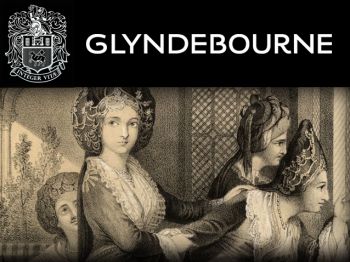Sussex academic's vision of Islam helps stage Glyndebourne opera
By: Jacqui Bealing
Last updated: Thursday, 11 June 2015

A University of Sussex professor’s knowledge of Islam has played a significant role in the creation of one of the major new-season attractions at Glyndebourne Opera House this summer.
Matthew Dimmock, Professor of Early Modern Studies and an expert in representations of Islam in literature, acted as consultant for a production of Mozart’s Die Entführung aus dem Serail, which opens at the world-famous Sussex venue on 13 June.
The comic opera, which translates as The Abduction from the Seraglio, was first performed in 1782 and tells the story of a young German woman, Konstanze, who has been seized by pirates and taken to Pasha Selim in Turkey. Selim first tries to seduce her and then threatens torture if she does not join his harem (or seraglio). Konstanze pins her hopes on being rescued by her Spanish lover Belmonte and his servant Pedrillo.
Professor Dimmock first met the production’s director Sir David McVicar more than a year ago to talk through ideas and historical contexts. He also attended rehearsals and gave views on details of staging aspects of Islam and his knowledge of travellers' accounts of the Ottoman Empire from this period to get the right feel of the place and the period.
He says: “I already knew this specific opera quite well, having used it in my 'Islam, Literature and 'the West'' course at Sussex.
“The experience has been extraordinary because I have never before been so close to opera singers at work. As you can imagine, the sound is amazing. And everything has been on such a grand scale - huge sumptuous sets, a large cast and production crew. It has been a fascinating and eye-opening thing to be involved with.”
In addition to giving views on the staging of the production, Professor Dimmock appears in a podcast about the opera, is joining a panel discussion on the subject organised by Prospect magazine on 16 July, and will give a pre-performance talk on 19 July.
He has also penned an essay for Glyndebourne’s printed programme on the complex relationship between Christians and Muslims and how this has been portrayed in the arts since the 17th century.
